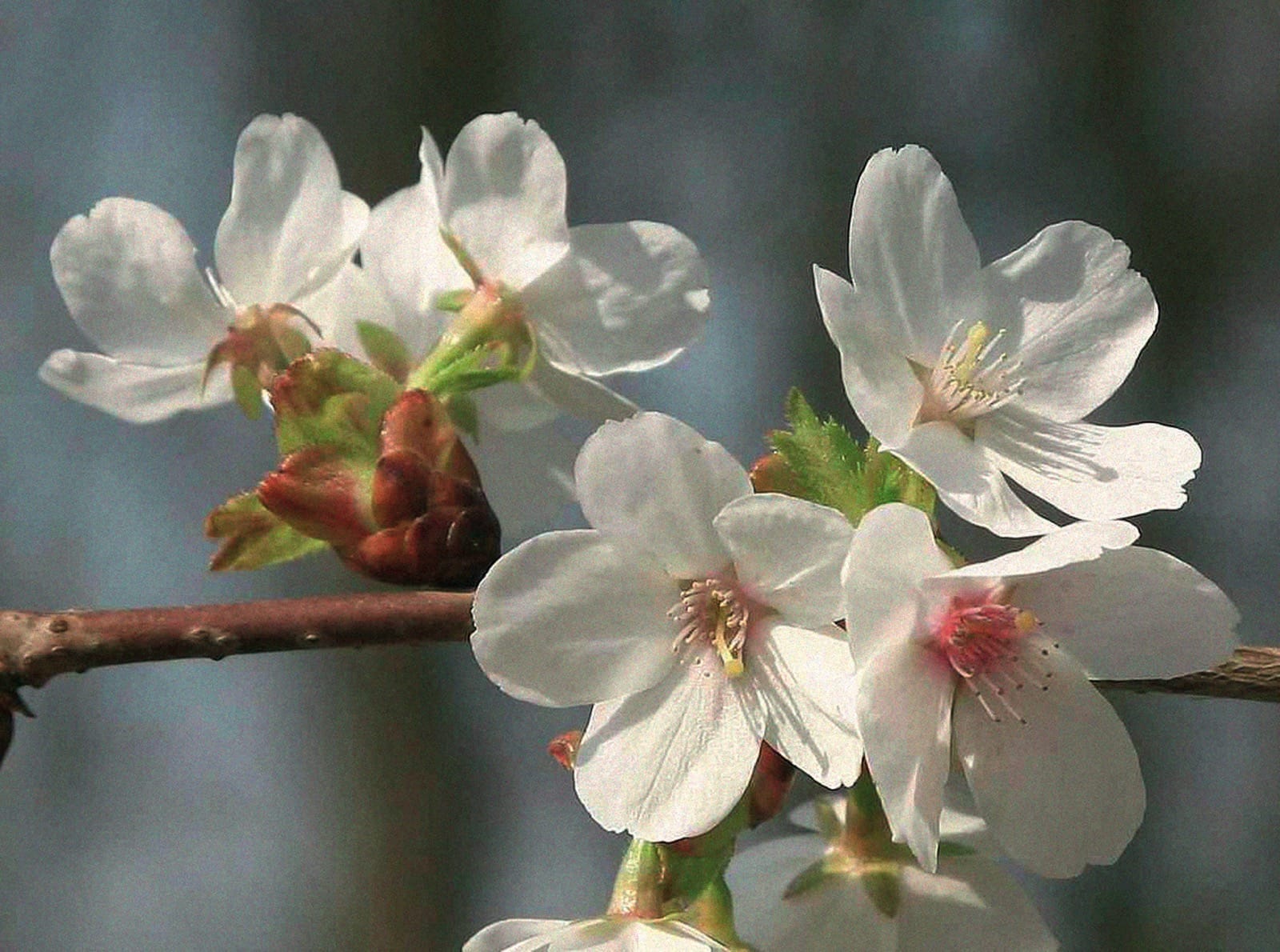Prunus takesimensis
Credits
Article from New Trees by John Grimshaw & Ross Bayton
Recommended citation
'Prunus takesimensis' from the website Trees and Shrubs Online (treesandshrubsonline.
Genus
Common Names
- Ullung-do Cherry
- Takesimensis Cherry
Other taxa in genus
- Prunus alleghaniensis
- Prunus americana
- Prunus × amygdalo-persica
- Prunus amygdalus
- Prunus angustifolia
- Prunus apetala
- Prunus arabica
- Prunus argentea
- Prunus armeniaca
- Prunus avium
- Prunus besseyi
- Prunus brigantina
- Prunus campanulata
- Prunus canescens
- Prunus cantabrigiensis
- Prunus cerasifera
- Prunus cerasus
- Prunus cocomilia
- Prunus concinna
- Prunus conradinae
- Prunus consociiflora
- Prunus cornuta
- Prunus cuthbertii
- Prunus dasycarpa
- Prunus davidiana
- Prunus × dawyckensis
- Prunus dielsiana
- Prunus domestica
- Prunus dulcis
- Prunus emarginata
- Prunus × fontanesiana
- Prunus fruticosa
- Prunus glandulosa
- Prunus grayana
- Prunus himalaica
- Prunus hortulana
- Prunus humilis
- Prunus ilicifolia
- Prunus incana
- Prunus incisa
- Prunus jacquemontii
- Prunus kansuensis
- Prunus lannesiana
- Prunus laurocerasus
- Prunus litigiosa
- Prunus lusitanica
- Prunus maackii
- Prunus mahaleb
- Prunus maritima
- Prunus maximowiczii
- Prunus microcarpa
- Prunus mira
- Prunus mugus
- Prunus mume
- Prunus nigra
- Prunus nipponica
- Prunus orthosepala
- Prunus padus
- Prunus pensylvanica
- Prunus persica
- Prunus pilosiuscula
- Prunus prostrata
- Prunus pumila
- Prunus rufa
- Prunus salicina
- Prunus sargentii
- Prunus serotina
- Prunus serrula
- Prunus serrulata
- Prunus sibirica
- Prunus × sieboldii
- Prunus simonii
- Prunus sogdiana
- Prunus speciosa
- Prunus spinosa
- Prunus ssiori
- Prunus subcordata
- Prunus subhirtella
- Prunus tangutica
- Prunus tenella
- Prunus tomentosa
- Prunus triloba
- Prunus virginiana
- Prunus × yedoensis
Tree to 20 m, 0.4 m dbh. Branchlets green to greyish brown. Leaves deciduous, 15 × 9 cm, elliptic, upper surface bright green, lower surface pale green, margin serrate, apex acuminate; petiole ~3 cm long; stipules deciduous with marginal hairs. Inflorescence umbellate with two to five flowers on pedicels 1.5 cm long. Flowers white or pale pink, 2.6–3.2 cm diameter; hypanthium tubular, sepals lanceolate-acuminate, petals bifid. Drupe ~1 cm long, reddish purple. Nakai 1918, Chang et al. 2004. Distribution SOUTH KOREA: Ullung-do, Ullung-gun. Habitat Woodland. USDA Hardiness Zone 7. Conservation status Not evaluated. Illustration NT657.
Despite its relatively recent arrival in horticulture, this pretty cherry from Ullung-do has been honoured with mass plantings in the Tidal Basin area of Washington DC, taking its place in the annual display of flowering cherries there (and given the ‘English’ name of Takesimensis Cherry (!); Ullung-do Cherry would be more appropriate, we suggest). It was planted for its reputed ability to tolerate wet sites in the wild (National Parks Service 2007) – a physiological feature that has been confirmed by Jacobs & Johnson (1996), who found that of a number of different cherries, this was the most tolerant to flooding. It was introduced to the US National Arboretum through arrangements made by Roland Jefferson (of USNA) with Prof. Jae-wae Hang of the Department of Forestry at Yeungnam University. With graduate students, Prof. Hang collected 27 accessions from trees across Ullung-do in 1986. In 1989, Skip March of the US National Arboretum made another collection, from Ullung-gun (R. Olsen, pers. comm. 2008). Seed has also been distributed by Chollipo Arboretum (to Arboretum Wespelaar, Belgium, for example, in 1995). Field notes from the 1989 collection (USNA accession 61613) were optimistic about its tolerances, including of wind, salt spray, and even concrete over its roots. A tree from this accession grows at Kew. Apart from the Washington trees and specimens in a few botanic gardens across our area, Prunus takesimensis seems to be largely unknown, and is apparently not in commerce, even in the United States. Richard Olsen (pers. comm. 2008) reports that its fruits are ‘sizeable and delicious’, and popular with staff at the US National Arboretum.

